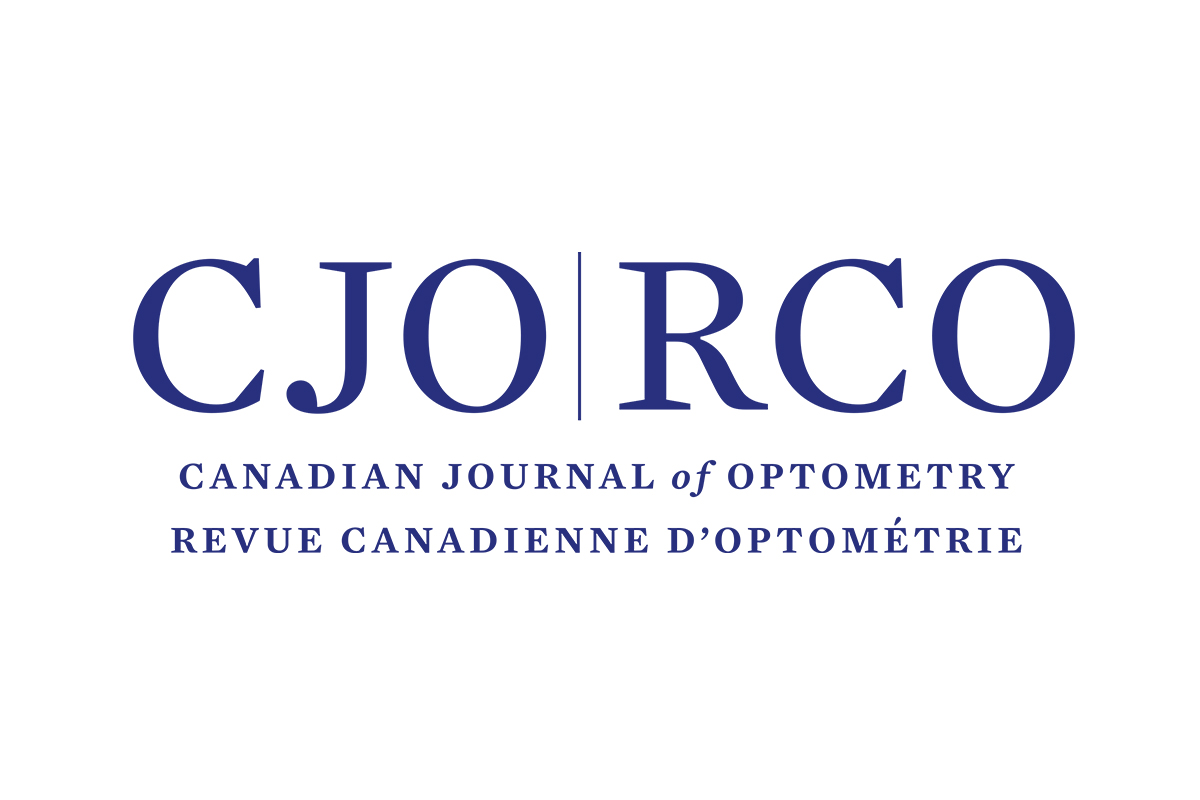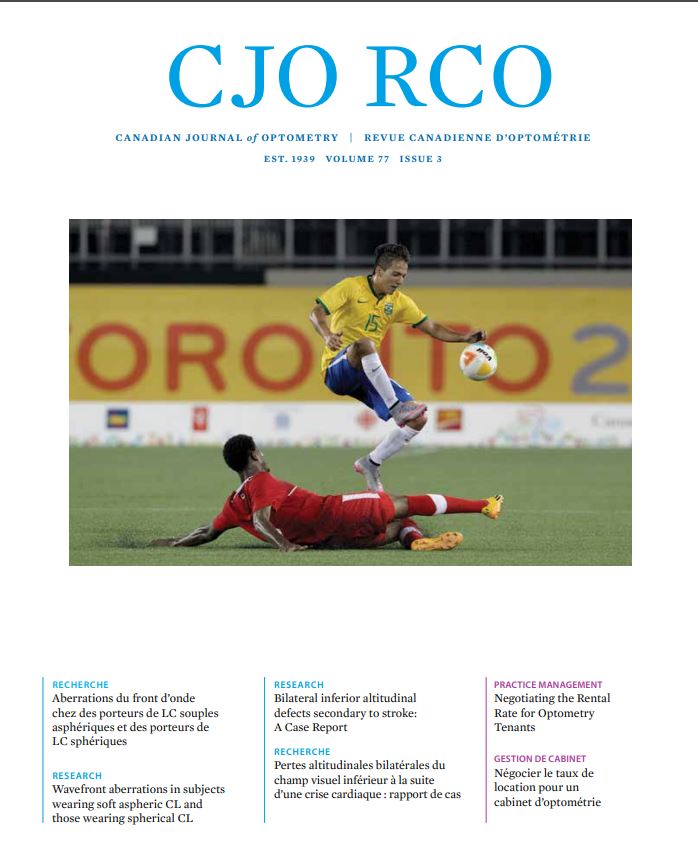Wavefront Aberrations in Subjects Wearing Soft Aspheric Contact Lenses and Those Wearing Spherical Ones
DOI :
https://doi.org/10.15353/cjo.77.494Mots-clés :
soft contact lenses, aspheric contact lenses, higher order aberrations, spheric aberrations, comaRésumé
Purpose: To measure the level of higher order aberrations (HOA) when wearing a soft aspheric contact lens (CL), compared to a spherical CL, in myopic subjects.
Method: Fifteen myopic subjects aged 20-30 years were tested for the presence of dry eye. Aberrometry measurements were done without a contact lens as well as with a spherical CL and an aspheric CL. Root mean square error (RMS) of HOA, spherical aberration (SA) and coma were measured five times in an interval of 15 seconds without blinking for each of the 3 conditions.
Results: Wearing a spherical CL produced a significant increase of SA and horizontal coma compared to an eye without a contact lens. When wearing an aspheric CL, there was a trend towards a smaller increase of these aberrations. However, the difference between both types of lens was not statistically significant. In terms of total HOA, these were higher when wearing the spherical CL, while they tended to be less with the aspheric CL. As for the variations between blinks, there was a similar increase in total HOA and individual modes with time for the three conditions.
Conclusion : Wearers of aspheric CL seem to show a tendency towards smaller amounts of SA, horizontal coma and HOA in general in comparison with wearers of SCL. However, total HOA increases during a long interval between blinks, no matter the condition.
Publié-e
Comment citer
Numéro
Rubrique
Licence
© Alexandra Fraser, Nicolas Fontaine, Valérie Lambert 2015

Cette œuvre est sous licence Creative Commons Attribution - Pas d'Utilisation Commerciale - Pas de Modification 4.0 International.


